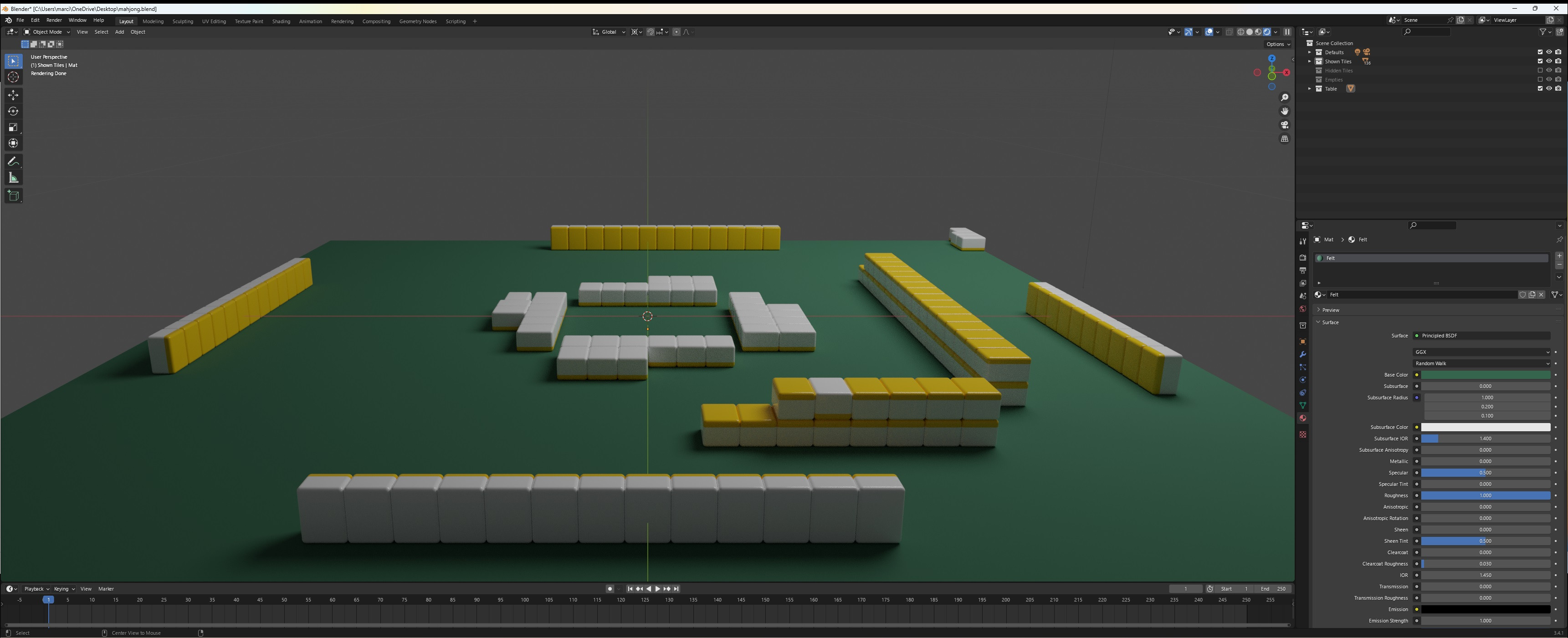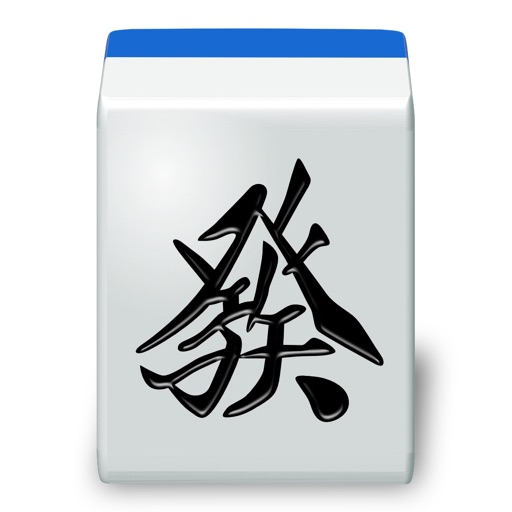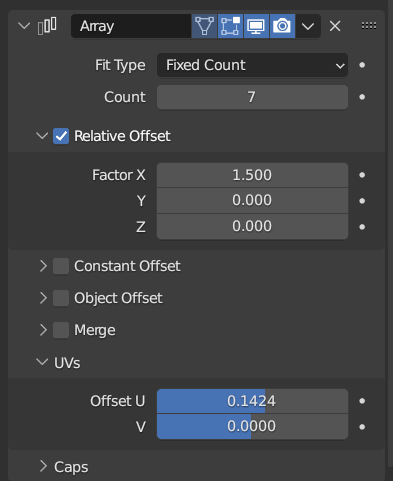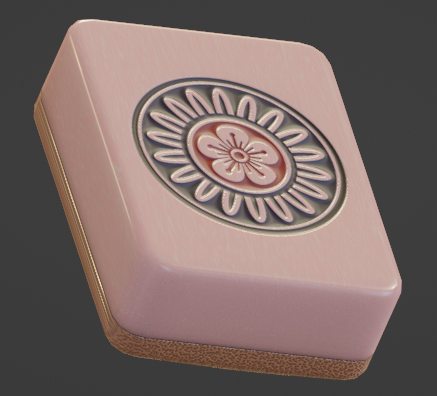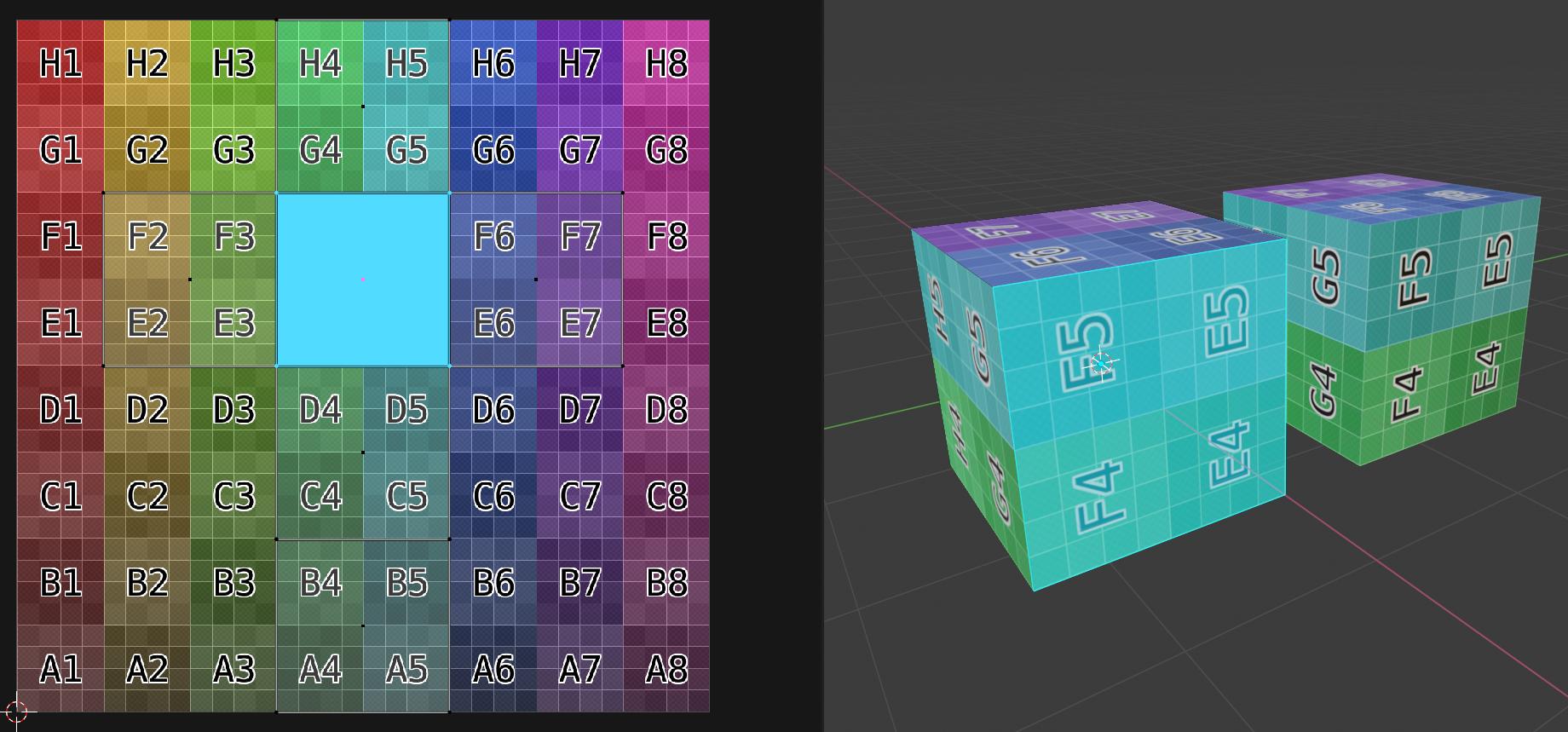I'm working on a scene involving a Riichi Mahjong table. Here's what I got:
All these tiles are linked duplicates of one mesh. Now before me is the most daunting task, which is giving all these tiles faces.
Here is the reference picture I'm working with - let's ignore the other things that are going on here, like some tiles being red or gray or shiny:
All the faces I want to use are available in SVG format here: https://github.com/FluffyStuff/riichi-mahjong-tiles. For example, the Hatsu tile face looks like this: https://github.com/FluffyStuff/riichi-mahjong-tiles/blob/master/Regular/Hatsu.svg
Now ideally, instead of having to carve all the faces by hand, the idea I had is to assign each tile a custom property pointing to one of these SVG file on disk, and having Blender either put on a bump-mapped texture or - since Blender can work with curves - carve out the face with a groove using a boolean operation.
Here's the result I'm hoping for:
The problem at hand is how to make all this work as little repetitive as possible. Do you have any pointers how I should go about achieving this? Could Python somehow help me with this?

